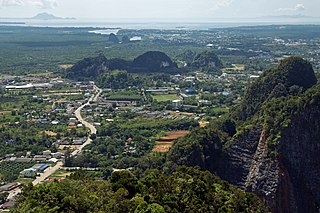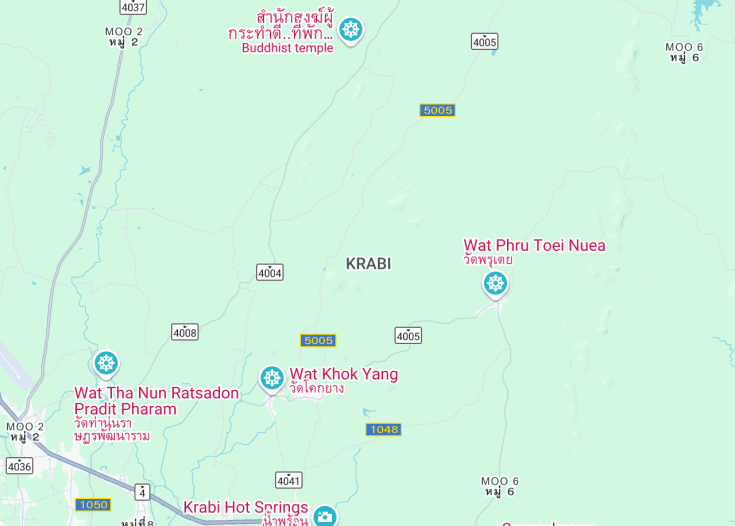Nestled on the west coast of southern Thailand, Krabi stands as a beacon of tropical allure, offering pristine beaches, crystal-clear waters, and lush jungles. Renowned for its breathtaking landscapes and rich biodiversity, Krabi is a gateway to a myriad of enchanting islands including the famous Phi Phi Islands and the serene Koh Lanta.
The region’s stunning karst formations provide a dramatic backdrop for an array of outdoor activities, from rock climbing to snorkeling and eco-tours. Whether you seek tranquility or adventure, Krabi promises an unforgettable escape into nature’s splendor.
For optimal weather and fewer crowds, consider visiting Krabi during the shoulder season, which runs from April to May and from September to October.
Prioritize visiting Ao Nang and Railay Beach for some of Krabi’s most picturesque beaches and vibrant night markets.
Top things to do & see in Krabi
Select the following sights and activities to discover best tickets and tours available in Krabi.
Krabi: A Tropical Paradise in Thailand
| Country | Thailand |
| Time in Krabi | GMT+7 |
| Language spoken | Thai |
| Population | 32,644 (Source: Thailand’s Census Bureau) |
| Currency | Thai Baht (฿, THB) |
| Airports |
|
Krabi, located in the south of Thailand along the Andaman coastline, is famous for its stunning seaside cliffs, crystal clear waters, and lush rainforest areas. A key highlight for many visitors to Krabi is its dramatic landscapes that include towering limestone cliffs which are popular among rock climbing enthusiasts. The province is also known for its sprawling series of beautiful islands such as Koh Lanta and Phi Phi Islands, accessible by boat tours which offer spectacular views and a chance to experience the vibrant marine life.
With its pristine beaches, Krabi offers ideal locales for various water-based activities including scuba diving, snorkeling, and kayaking. Aside from its natural beauty, Krabi also has a rich cultural context. It is home to several Buddhist temples that are important both spiritually and historically, exemplifying impressive religious architecture and providing insights into local traditions and customs.
The Night Market in Krabi town is a bustling, colorful affair where visitors can sample southern Thai cuisine and shop for local handicrafts, adding to its charm and appeal as a destination. Krabi’s infrastructure supports a friendly tourist experience with a range of accommodation from budget hostels to luxury resorts, fitting the needs of different travelers. The local culinary scene is a delight, especially for seafood lovers, with restaurants serving up fresh catches and traditional Thai dishes.
Additionally, Krabi’s commitment to preserving its natural and cultural heritage while promoting sustainable tourism practices contributes significantly to its allure. This makes Krabi not just a location for vacationing but also a place where tourists can engage in environmental and cultural education, understanding the significance of conserving such a beautiful region in Thailand. Visitors leave Krabi with rich experiences and stories to tell, making it one of Thailands’ must-visit destinations.
Where is Krabi?
Krabi is a beautiful province located on the southwestern coast of Thailand, facing the Andaman Sea.
Distances:
| Route | Distance by car | Time by car |
|---|---|---|
| Bangkok to Krabi | 783 km | Approx. 12 hours |
| Phuket to Krabi | 163 km | Approx. 3 hours |
| Chiang Mai to Krabi | 1,504 km | Approx. 24 hours |
What is Krabi famous for?
Krabi is renowned for its spectacular scenery, particularly its limestone cliffs that appeal to climbers globally and its idyllic beaches like Ao Nang and Railay Beach.
History
Prehistoric Period – Before 10th Century
The region of Krabi, with its strategic position along the coast of Southern Thailand, has been inhabited since prehistoric times. Archaeological evidence, including discovered tools, cave paintings, and remains of ancient habitations, suggests a continuous human presence potentially dating back to the period when sea levels were significantly lower than today. These early inhabitants were primarily hunter-gatherers, with the abundant marine and terrestrial resources providing a bountiful ground for early human sustenance and civilization development.
10th Century – 19th Century
Historical records from the 10th century reveal that Krabi was an important part of the ancient maritime Silk Road. The area saw a mix of Buddhist and Islamic influences, evident from various archaeological findings including pottery, inscriptions, and architectural remnants. Krabi was officially recognized as a town in the 18th century under the rule of King Taksin, following the fall of Ayutthaya to the Burmese. This period marked significant development for Krabi as a trading and transit point between the local population and visiting traders from across Asia.
20th Century – Present Day
In the 20th century, Krabi transitioned from a relatively quiet trading post to a noticeable point in Thailand’s burgeoning tourist map. Post World War II, the region developed infrastructures such as roads and airports which opened up Krabi to both international and domestic tourism. The discovery of stunning beaches, clear waters, and unique limestone cliffs began to attract visitors from around the globe, transforming Krabi from a historical stopover to a must-visit destination on Thailand’s Andaman Sea coast. Today, Krabi stands out not only for its natural beauty but also for its rich historical tapestry that continues to attract scholars and tourists alike.
Visit Krabi
What to see and do in Krabi
Explore the enchanting landscape of Krabi, a destination that offers an array of visually stunning sights and engaging activities. Key highlights include:
- The iconic Phi Phi Islands: renowned for crystal-clear waters and excellent snorkeling opportunities.
- Railay Beach: accessible only by boat, this peninsula is famous for its beautiful beaches and climbing spots.
- Krabi Town: known for its temple Wat Kaew and authentic local markets.
- Hot Springs and Emerald Pool: natural thermal springs and a visually stunning pool, perfect for a refreshing swim.
Adventurers and nature lovers can delve into activities like rock climbing, kayaking, and trekking through the lush national parks surrounding Krabi.
Festivals and Events in Krabi
Krabi is lively with various cultural and social events throughout the year. Notable among them:
- The Krabi Boek Fa Andaman Festival, which signals the start of the tourism season in November with cultural shows, sporting competitions, and parades.
- The Rock and Fire Festival at Railay Beach, an exhilarating event held in April featuring fire dancing and rock climbing challenges.
Best time to visit Krabi
The ideal time to visit Krabi is between November and March when the weather is dry and the temperatures are pleasantly cool, providing perfect conditions for outdoor activities and beach relaxation.
Is Krabi worth visiting?
Krabi is unquestionably worth visiting for its breathtaking scenery alone. The unique blend of beautiful beaches, imposing limestone cliffs, and lush green forests make it a top destination in Thailand.
Coupled with a rich history and vibrant cultural scene, Krabi offers a compelling mix of exploration and relaxation, appealing to both history buffs and adventure seekers.









